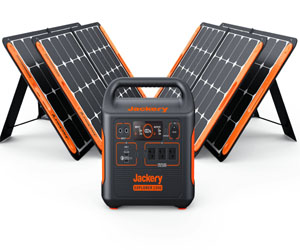


Balancing Rising Energy Demands

Energy demands are on the rise as our modern world becomes increasingly reliant on electricity for almost every aspect of life. From powering our homes and businesses to fueling our vehicles and enabling our digital devices, energy is the lifeblood of contemporary society. However, with increasing global population and economic growth, the challenge of meeting these energy demands while maintaining sustainability and reducing environmental impact is more pressing than ever.
The Growing Energy Demands
The primary driver of escalating energy demands is population growth and urbanization, particularly in developing nations. As more people move to urban areas and access modern amenities, energy consumption naturally increases. In parallel, the proliferation of technology, from smartphones to electric vehicles, intensifies our need for electricity. In addition, industrial processes and manufacturing depend heavily on energy-intensive operations.
Energy Sources And Environmental Impact
The conventional sources of energy, such as coal, oil, and natural gas, have been the backbone of energy production for decades. However, their use has resulted in significant environmental consequences, including air pollution, greenhouse gas emissions, and habitat destruction. As a result, there is an increasing push for cleaner, more sustainable energy sources.
The Transition To Renewable Energy
Renewable energy sources, such as solar, wind, and hydropower, are being hailed as the answer to the environmental challenges associated with conventional energy sources. These renewables offer several advantages:
Clean Energy: Renewable sources produce little to no greenhouse gas emissions, reducing the negative impact on climate change.
Abundant And Sustainable: Sunlight, wind, and flowing water are nearly infinite resources, making them sustainable over the long term.
Energy Independence: By utilizing locally available renewables, countries can reduce their dependence on energy imports and enhance their energy security.
Technological Advancements: Ongoing advancements in renewable technology are making these sources more efficient and affordable.
Challenges And Solutions
While renewable energy is a promising solution to rising energy demands, it comes with its own set of challenges. The intermittent nature of some renewables, like solar and wind, can lead to energy supply fluctuations. Energy storage solutions, such as advanced batteries, are essential to address this issue.
Moreover, the transition to renewables requires significant infrastructure investments and supportive government policies. Subsidies, tax incentives, and regulatory frameworks can encourage both individuals and businesses to adopt renewable energy sources. Energy efficiency measures, including improved building standards and industrial practices, can help reduce overall energy consumption.
The challenge of meeting escalating energy demands while addressing environmental concerns is a complex, multifaceted issue that requires a collective effort. Balancing the need for energy with sustainability necessitates a transition to renewable energy sources, energy efficiency, and responsible consumption practices.
Individuals can contribute by adopting energy-efficient technologies and making sustainable choices in their daily lives. Businesses and governments must implement policies that support the growth of renewable energy, invest in infrastructure, and prioritize sustainability in their operations.
By addressing the growing energy demands with innovative solutions and a commitment to environmental stewardship, we can create a more sustainable energy future that meets the needs of current and future generations. The path to a sustainable energy future is both challenging and rewarding, and it is a journey that we must embark on to ensure a thriving planet for all.
Making The Most Of Your Compact Living
 The Benefits Of Small Space Living
The Benefits Of Small Space Living
Before delving into the intricacies of small space planning, it's essential to understand the advantages of choosing a compact living arrangement.
Simplicity: Small homes encourage a minimalist lifestyle, reducing clutter and allowing you to focus on what truly matters.
Eco-Friendly: Smaller homes typically have a smaller environmental impact, as they consume fewer resources for heating, cooling, and maintenance.
Cost-Effective: Compact spaces are generally more affordable, both in terms of initial purchase or rent and ongoing utility costs.
Less Maintenance: With less square footage, there's less space to clean and maintain, freeing up your time for other pursuits.
The Key To Small Space Success: Planning
Small space planning is an art, and it involves thoughtful consideration of every square inch. Here are some crucial factors to keep in mind when planning for your compact living space:
Multi-Functional Furniture: Invest in furniture that serves multiple purposes. For example, a sofa that doubles as a guest bed or a dining table with storage space can help maximize your limited square footage.
Vertical Storage: Make use of vertical space for storage. Wall-mounted shelves, hooks, and cabinets can help keep your belongings organized without encroaching on your floor space.
De-Clutter: Embrace the mantra of minimalism and declutter regularly. If you haven't used an item in the past year, consider whether you truly need it. Donating or selling items that no longer serve you is a great way to keep your small space tidy.


Creative Landscaping Ideas
 2. Xeriscaping: For areas with limited water resources, xeriscaping is the way to go. This landscaping approach focuses on drought-tolerant plants, efficient irrigation systems, and mulching to conserve water. The result is a low-maintenance garden that thrives in arid conditions.
2. Xeriscaping: For areas with limited water resources, xeriscaping is the way to go. This landscaping approach focuses on drought-tolerant plants, efficient irrigation systems, and mulching to conserve water. The result is a low-maintenance garden that thrives in arid conditions.
3. Edible Landscaping: Why not turn your outdoor space into a source of fresh produce? Edible landscaping incorporates fruits, vegetables, and herbs into your garden design. Raised beds, vertical gardens, and fruit trees can create a beautiful and functional space that provides your family with fresh, homegrown produce.
4. Zen Gardens: Zen gardens are known for their minimalist and tranquil designs. These peaceful spaces often feature sand or gravel raked into patterns, along with carefully placed rocks and a few select plants. They provide a sense of serenity and are perfect for meditation or relaxation.
5. Cottage Gardens: Cottage gardens are characterized by their informal, abundant, and colorful arrangements. They typically include a mix of flowers, shrubs, and even some vegetables. The key is to create a slightly wild and romantic atmosphere, perfect for a more rustic and charming look.
6. Rock Gardens: If you have rocky or hilly terrain, consider creating a rock garden. These gardens use the natural features of the land, incorporating rocks, pebbles, and alpine plants. They provide a unique and visually appealing landscape.
7. Vertical Gardens: For small spaces or urban areas, vertical gardens are an excellent option. These gardens make use of walls, fences, or trellises to grow plants upwards, saving valuable ground space and adding a touch of greenery to urban environments.
Cleaning Your Way To A Sustainable Future
 Non-Toxic Products: Green cleaning relies on cleaning products that are free from harmful chemicals and synthetic fragrances. These products are safer for your health and the environment.
Non-Toxic Products: Green cleaning relies on cleaning products that are free from harmful chemicals and synthetic fragrances. These products are safer for your health and the environment.
Reduced Environmental Impact: Green cleaning minimizes the use of harsh chemicals that can contaminate water systems and contribute to pollution. It also promotes the use of eco-friendly cleaning tools and practices.
Clean Indoor Air: Green cleaning products and methods focus on improving indoor air quality by avoiding the release of volatile organic compounds (VOCs) commonly found in traditional cleaning products.
Effective Green Cleaning Techniques
Natural Cleaning Solutions: Utilize natural ingredients like white vinegar, baking soda, lemon juice, and essential oils to create your cleaning solutions. For example, a mixture of vinegar and water can serve as an excellent all-purpose cleaner.
Reusable Cleaning Tools: Invest in high-quality reusable cleaning tools, such as microfiber cloths and mop heads. These tools effectively capture and remove dirt, dust, and allergens, reducing the need for disposable cleaning supplies.
Reduced Plastic Waste: Opt for cleaning products and containers that are recyclable or refillable to reduce plastic waste. Single-use plastic bottles contribute to environmental pollution, and green cleaning encourages responsible consumption.
Energy-Efficient Appliances: Choose energy-efficient cleaning tools and appliances. For instance, energy-efficient vacuum cleaners and steam cleaners use less energy while providing effective cleaning.
The Art Of Seasonal Planting
 The Importance Of Seasonal Planting
The Importance Of Seasonal Planting
Seasonal planting is more than just a tradition; it is a science and an art that has been practiced for generations. It recognizes the fact that different plants thrive in different seasons due to variations in temperature, daylight, and weather conditions. By aligning your garden with these natural rhythms, you can optimize plant growth, health, and yield.
Key Benefits Of Seasonal Planting
Optimal Growth Conditions: Seasonal planting ensures that your crops receive the right balance of sunlight, temperature, and moisture at each stage of their growth. This leads to healthier and more productive plants.
Crop Diversity: Planting seasonally allows you to diversify your garden throughout the year. Different seasons support various plant families, from cool-season greens in spring to warm-season fruits in summer.
Pest And Disease Management: Seasonal changes can disrupt the life cycles of garden pests and pathogens. By rotating your crops seasonally, you reduce the risk of infestations.
Soil Health: Seasonal planting helps maintain soil fertility by preventing the depletion of specific nutrients. Different plants have varying nutrient needs, and rotating them can help your soil recover.
A Sustainable Solution For A Thirsty World
 Types Of Water Reuse Systems
Types Of Water Reuse Systems
Direct Potable Reuse (DPR): DPR systems treat wastewater to a high standard and then inject it directly into a drinking water supply, bypassing the need for natural recharge. Although this approach is effective, it requires advanced treatment processes and stringent monitoring to ensure water quality and safety.
Indirect Potable Reuse (IPR): IPR systems involve the injection of treated wastewater into an environmental buffer, such as an aquifer or reservoir, before it is eventually extracted for drinking water treatment. This approach provides an additional layer of natural treatment and is considered a safer alternative to DPR.
Non-Potable Water Reuse: Many water reuse systems are designed for non-potable applications. These systems treat wastewater to a level suitable for purposes like irrigation, industrial processes, toilet flushing, and cooling systems in power plants. Non-potable water reuse significantly reduces the demand on freshwater sources for these activities.
Environmental And Economic Benefits
Water reuse systems offer several compelling benefits:
Conservation: Reusing water reduces the amount of freshwater withdrawn from rivers and aquifers, helping protect ecosystems and maintaining their natural flow.
Energy Savings: Treating and transporting water requires energy. By reusing water locally, we reduce the energy footprint associated with long-distance water conveyance.
Cost Reduction: Municipalities and industries can save on water treatment and distribution costs by adopting water reuse systems.
Reduced Wastewater Discharge: Water reuse decreases the volume of wastewater discharged into the environment, reducing the risk of pollution.